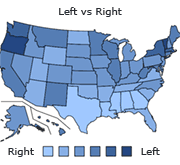Quantitative Analysis Practice Test
Quantitative analysis is a mathematical approach to represent a given reality in terms of a numerical value. This is done to make predictions, evaluate risks and rewards (as in finance), and for many other purposes. Statistical models, research and measurement are tools used in quantitative analysis.
Are you studying for exams in a quantitative analysis class? This is a practice test to help you gauge your level of preparedness. Find out if you've studied enough. Good luck.

